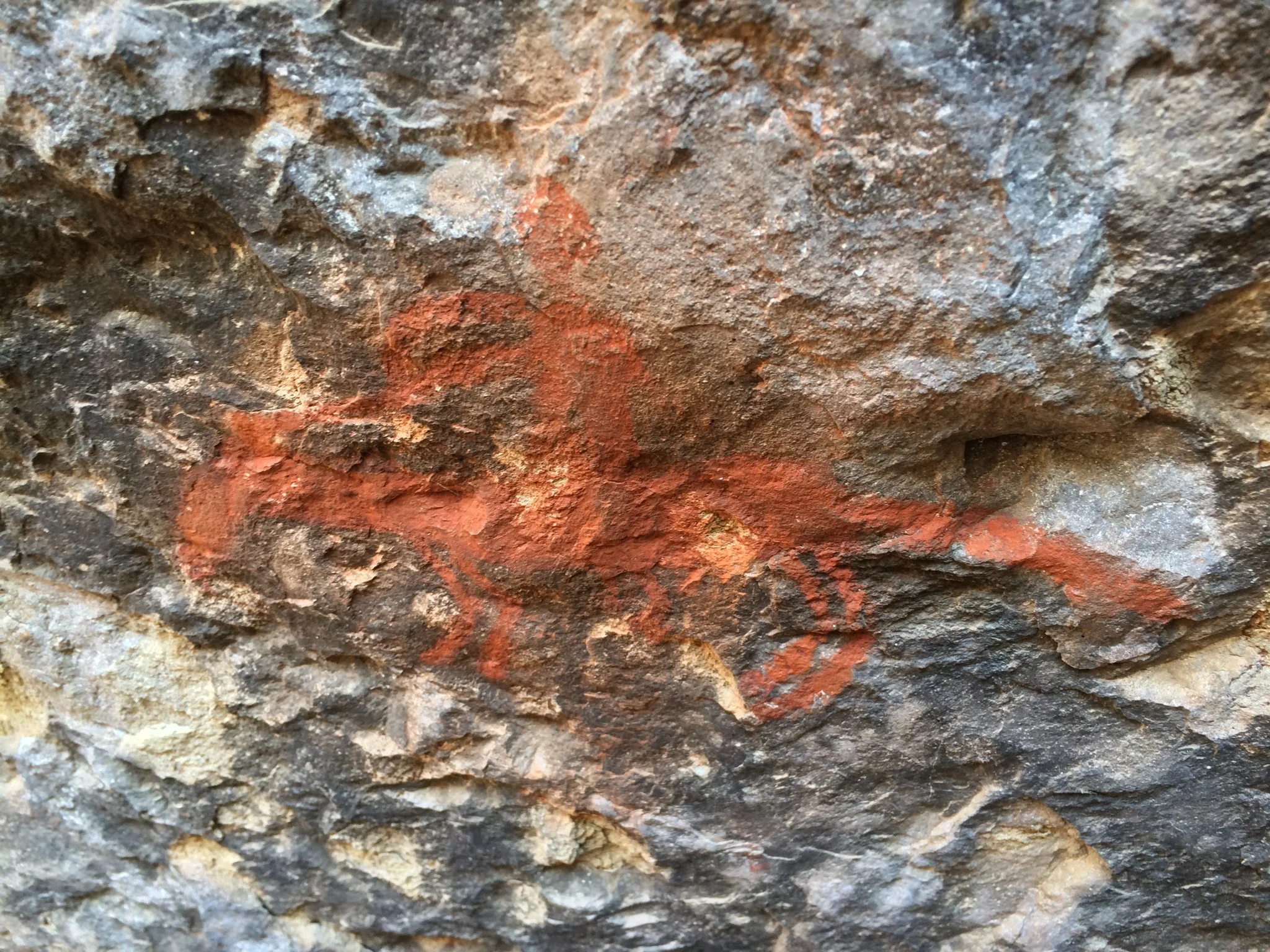From Baja California through the Los Angeles basin, there are many pieces of rock art that link today’s California to the California of the past. While many of these pieces are located in hard to reach places, and have suffered the ravages of time, or mankind, the Cave of the Four Horsemen in Malibu is a location that has been both well-preserved, and for the most part, is easily accessible. Officially known as the “Saddle Rock Pictograph Site”, the Cave of the Four Horseman is a pictograph site located in a rockshelter in Malibu, and is the best preserved rock art of the Chumash tribe. While the Chumash inhabited the Los Angeles basin from 5,000 B.C. onward, the Cave of the Four Horsemen is unique because it depicts the expedition of Gaspar de Portola, which passed through the region in 1769-1770. Although the rockshelter has a plethora of fine paintings that have survived, the signature pictographs depict four individual men on horseback, and is the inspiration for the cave’s name.
Painted Rock Petroglyphs, Arizona
I’m a fan of petroglyphs, pictographs and anything old. It’s intriguing to me to see things from the ancient past, and wonder what inspired them and what they mean. It’s also interesting to see what similarities exist from site to site, and what differences also exist. It’s also fun to imagine what exactly life was life when they were created thousands of years ago. In California, where I live, most petroglyph and pictograph sites are either require a hike or some exploration; and while I don’t mind either of those activities, they’re generally hard to find and in some cases, found by too many people. On a number of occasions, I’ve been told of great rock art secreted away in remote areas, only to find that innumerable prior “adventurers” have already ruined the spot, or the art. Because of these unfortunate experiences, I’m also a little skeptical when I research or hear of a new spot for rock art, and temper my expectations accordingly.
The Blue Sun Cave
I can’t remember the first time I heard about the Blue Sun Cave. Maybe it was at a party, when I was discussing modern petroglyphs (graffiti) in the desert, compared to old, actual petroglyphs. Perhaps I stumbled across a mention of it online while searching for details on another trip. Or, maybe I read about it in my old, battered copy of Afoot and Afield in San Diego, by Jerry Schad. Even though I’m not sure how, where, or why I first heard about it, I do remember what Schad had to say about it, “rock art located on Indian Hill, which was purposely mislabeled on certain maps”.




